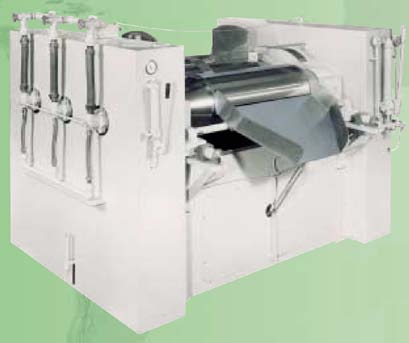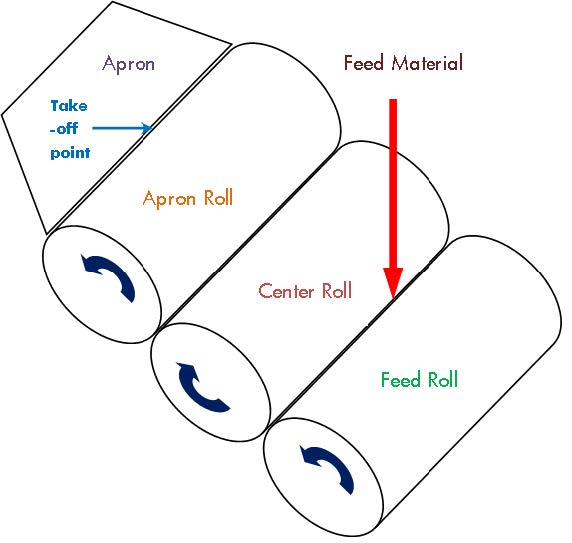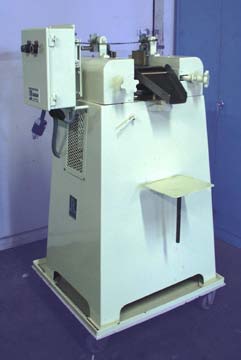Tech Report
Upgrade your ball mill process by switching to a three roll mill.

Technology Brief
In certain applications, the three roll mill can replace a ball milling process and offer dramatic improvements in throughput rate, energy consumption and product yield.
Common issues in ball milling
A ball mill consists of a rotating cylindrical shell partially filled with grinding media such as ceramic or metal balls. The product to be milled is loaded into the shell and as the cylinder rotates along the horizontal axis, the pieces of grinding media collide against each other and against the vessel surfaces. The impact from these collisions imparts the grinding action which reduces the size of solid particles in the product.
While the ball mill is easy to operate and relatively versatile (most designs can handle either dry or wet feeds), it has a number of common drawbacks including slow throughput, product losses, high energy consumption, tendency of clogging and intensive, time-consuming clean-up.
The ball milling of flowable materials can be optimized by switching to a three roll mill. Not all ball mill applications can be processed in a three roll mill but many are suitable especially pastes and slurries of moderate viscosity.
Three roll mill, theory of operation
A three roll mill is composed of three horizontally positioned rolls rotating in opposite directions and at different speeds. The material to be milled is placed between the feed and center rolls and gets transferred from the center roll to the apron roll by adhesion.
The shear forces between adjacent rolls generate the dispersion. Decreasing the distance between rolls produces greater shear but also reduces throughput. Gap settings in the range of 0.001" are common.
Milled material is scraped from theapron roll by a take-off knife. The cyclecan be repeated to improve dispersion or until particle size equilibrium is reached. Product loss is extremely minimal.

Is your product three roll mill material?
The three roll mill is a classic technology that remains to be one of the best methods for preparing very fine particle dispersions in paints, inks, cosmetics, ointments, dental composites, electronic pastes and many other materials. Below are three simple guidelines to help determine if your product is three roll mill material.
- Moderately viscous, flowable materials are ideal for the three roll mill. Most applications are poured on the area between the feed and center rolls. Too low a viscosity can hinder the product from staying on the roll surfaces, i.e. it may be prone to dripping through the rolls.
- The material should have an element of stickiness to it so it can adhere well to the roll surfaces and transfer easily from one roll to another. Testing is recommended to confirm compatibility.
- The three roll mill cannot handle powder or any solid by itself. Some manufacturers add solvent to wet out the powder (or powder blend) and make it suitable for three roll milling.
Sample Application: Polymer-Ceramic Composite

A manufacturer of high-performance thermoplastic and ceramic composites was previously ball milling their resin base material which contains micronized silicon carbide. To achieve the desired level of dispersion of the ceramic particles, operators had to mill the slurry over several days. After testing a three roll mill at the Ross Test & Development Center, they realized they can cut down milling time to a matter of minutes. A new floor-standing three roll mill was delivered and installed in their facility within weeks, tremendouslyimproving rate of production.